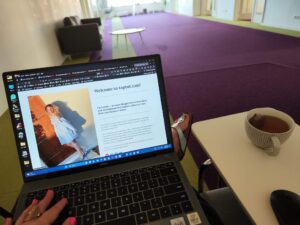Living a minimalist life is often misunderstood. It’s not about stark white walls and empty shelves. It’s not about deprivation. Instead, minimalism is about being intentional. It’s about consciously choosing what adds value to your life and letting go of what doesn’t.
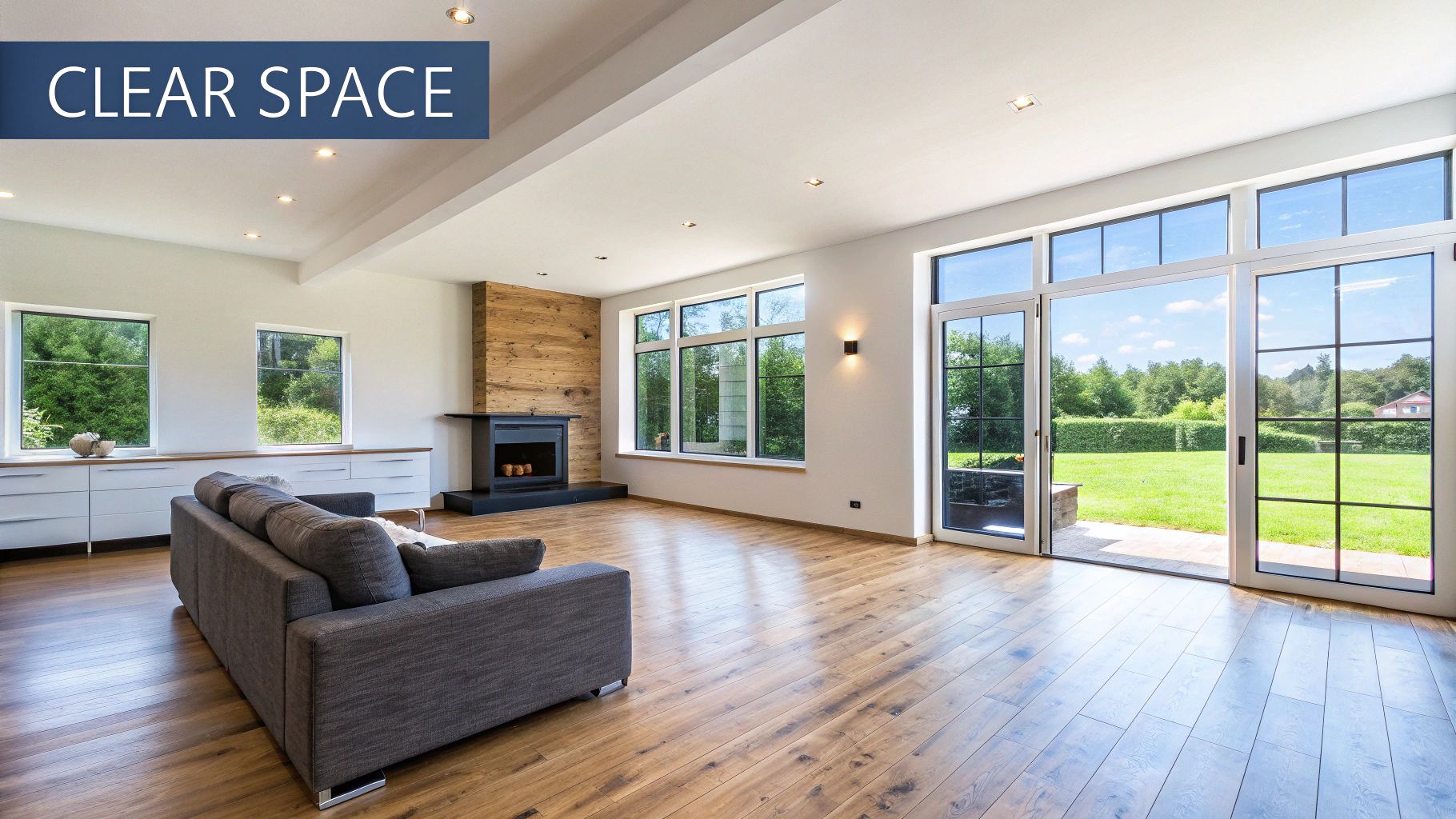
This shift in perspective goes beyond mere aesthetics. It becomes a powerful tool for personal growth. Think of it like curating a museum collection. You wouldn’t fill it with every artifact you find. You’d select pieces that tell a story, evoke emotion, and have lasting significance. That’s the essence of minimalism.
Beyond the Surface: Defining Minimalism
Minimalism is a philosophy. It encourages us to examine our relationship with our possessions. It prompts us to question the idea that happiness equals accumulation.
In the United States, 63% of Americans believe they have too much stuff. Over a third feel anxious because of clutter. This fuels the adoption of minimalist habits, like reducing non-essential purchases and embracing sustainability. You can find more statistics at: Minimalism’s Impact on Consumer Trends. Minimalism helps us reclaim control over our spaces, and in turn, our mental well-being.
The Cultural Lens: Minimalism Across the Globe
The beauty of minimalism is its adaptability. Different cultures interpret and practice minimalism in their own ways. These ways reflect their values and traditions.
In Japan, the concept of “Ma” emphasizes the beauty of empty space. It focuses on the power of suggestion. This differs from the Western approach. The Western approach often focuses on decluttering and simplifying physical possessions. However, the core principle remains the same: appreciate the essential and find freedom in owning less. This idea resonates with a growing global movement. A movement seeking a more intentional and fulfilling way of life. Learn more here: How to Start With Minimalism.
The Psychological Shift: From Accumulation to Curation
Moving toward a minimalist life involves a significant psychological shift. It requires us to confront our emotional attachments to objects. We have to challenge societal pressures that encourage us to constantly consume.
This can be challenging. But it also offers profound rewards. As we curate our belongings with intention, we discover a greater sense of clarity and purpose. By letting go of excess, we create space for what truly matters: experiences, relationships, and personal growth. This makes minimalism more than a decluttering trend. It’s a path toward a more meaningful and fulfilling life.
Breaking Free From the Psychology of Clutter
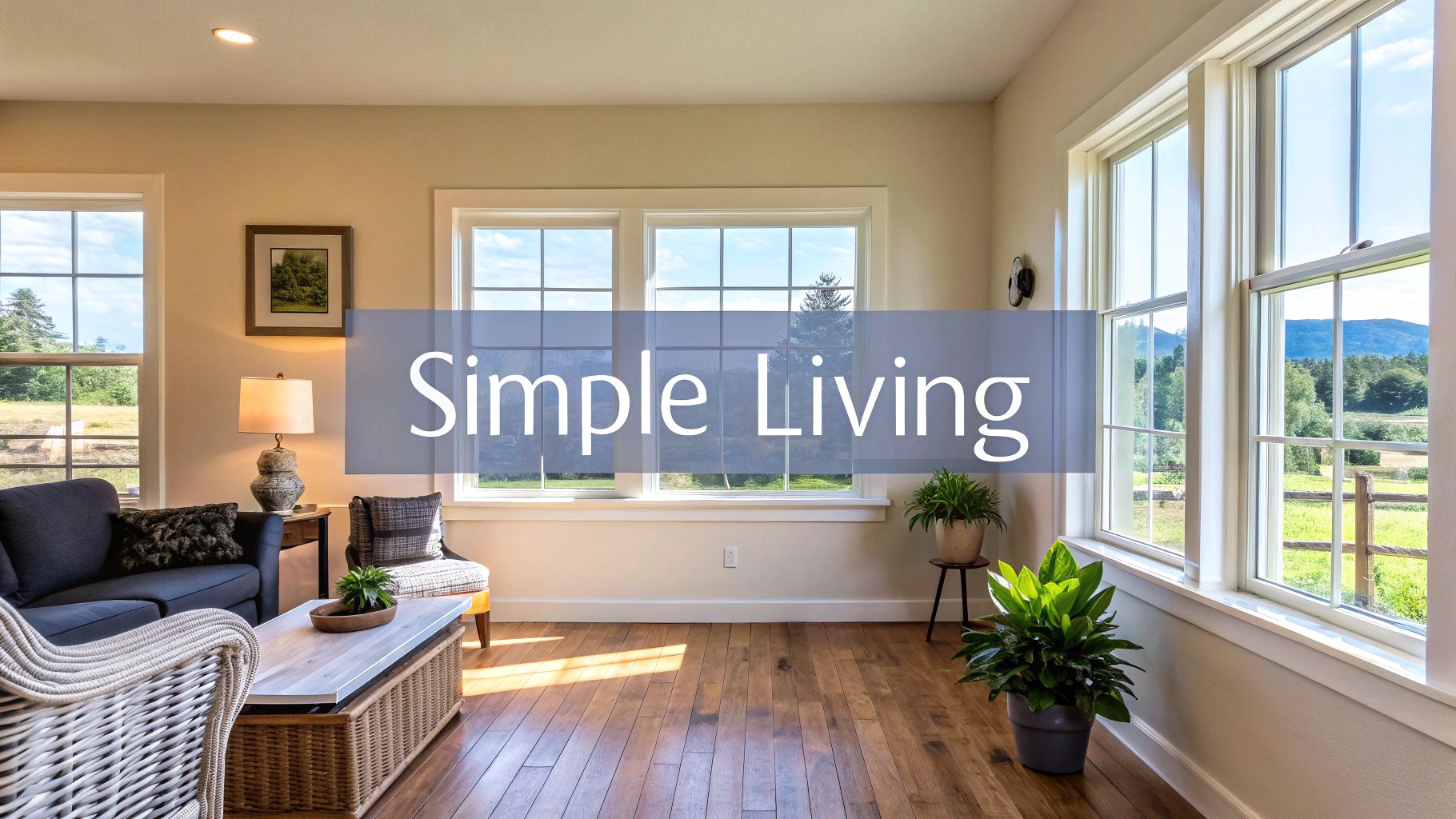
Our physical spaces deeply affect our mental state. Clutter can create mental fog, increase stress hormones, and even cause decision fatigue, even if we don’t consciously realize it. This link between our external environment and inner well-being is central to minimalist living. Decluttering our physical spaces makes room for mental clarity and focus.
The Mental Weight of Physical Clutter
Imagine focusing on a difficult task in a disorganized room. Visual distractions constantly fight for your attention, hindering concentration. This isn’t just anecdotal; research shows that physical clutter harms our cognitive function. Studies also link cluttered environments to higher cortisol, the stress hormone. This constant low-level stress can drain us and make us feel overwhelmed.
Emotional Attachments and Letting Go
We struggle with clutter because we’re emotionally attached to objects. We link memories, experiences, and even our identity to our possessions. A piece of inherited jewelry, for example, might represent a connection to a loved one, making it hard to let go. Minimalist living involves recognizing when these attachments no longer serve us. It encourages us to detach from sentimental value and focus on an object’s value in our present lives. This process can be tough, but it’s key to creating a peaceful and healthy space. Minimalism significantly impacts consumer behavior, especially among millennials. A 2023 study explored how minimalism affects millennial well-being, highlighting environmental awareness and voluntary simplicity. Learn more about minimalism’s impact on millennials.
Rewiring Your Brain for Focus and Creativity
Minimalist spaces offer more than just a nice look. They can actually rewire our brains to boost focus and creativity. Removing visual distractions and simplifying our surroundings creates mental space for deeper thinking and problem-solving. A minimalist environment fosters calm and allows our minds to wander, leading to new ideas. It’s like cleaning your computer’s desktop: a clean workspace helps programs run better. A minimalist living space frees up mental resources, letting us focus on what’s important.
Creating Space for Meaningful Pursuits
Letting go of excess possessions creates space for more meaningful pursuits. This could mean spending more time with loved ones, pursuing hobbies, or enjoying quiet moments. Minimalist living frees us from the cycle of acquiring, organizing, and maintaining belongings. It lets us invest in experiences and relationships that bring lasting joy. This shift in priorities is the core of minimalist living.
Transforming Your Space: The Decluttering Blueprint
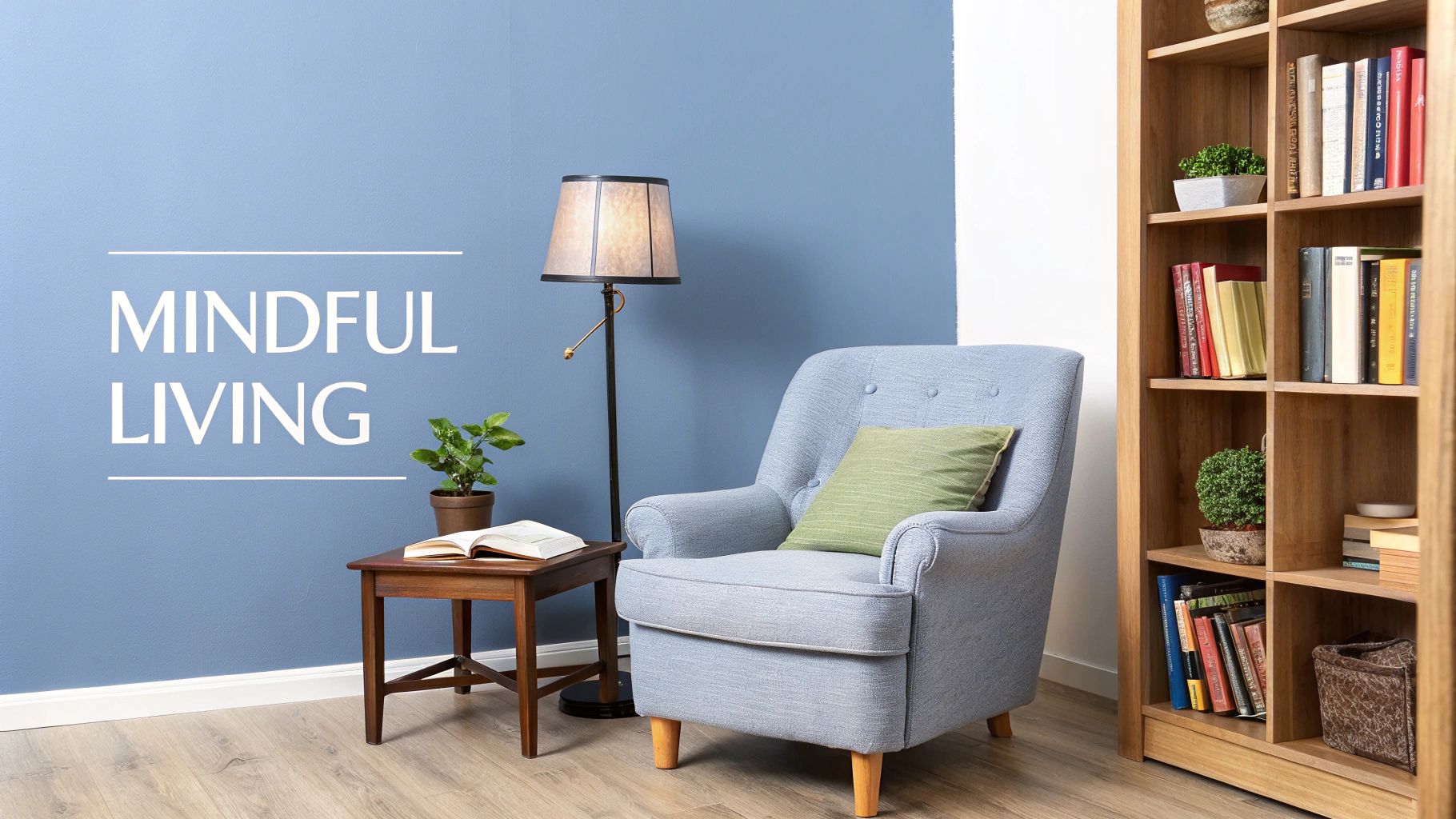
Decluttering can feel overwhelming. But with a smart plan, it can become a manageable, even enjoyable, journey to a more peaceful home. This section offers a practical blueprint for transforming your space, starting with a room-by-room approach designed for real-life living. This isn’t just a quick clean; it’s about building a sustainable, minimalist lifestyle.
The Decision Matrix: Conquering Clutter Paralysis
One of the biggest challenges in decluttering is deciding what stays and what goes. That’s where the decision matrix comes in. This simple tool helps you evaluate every item based on two key factors: its usefulness and the joy it sparks. Ask yourself: Do I use this item regularly? Does it bring me happiness? If the answer is no to both, it’s time to let it go. This method streamlines your decision-making and helps you overcome sentimental attachments, a common roadblock to minimalist living.
Room-by-Room Strategies: A Targeted Approach
Decluttering one room at a time is essential. It breaks the task into smaller, less daunting chunks. Begin with the areas that cause you the most stress. For many, the bedroom is an ideal starting point. A cluttered bedroom can impact sleep and relaxation. Here’s a guide on mastering bedroom decluttering. After the bedroom, tackle other key areas like the kitchen, living room, and bathroom. This focused approach ensures each space gets the attention it deserves, creating visible progress throughout your home.
To help you focus your decluttering efforts, here’s a handy table outlining room-by-room priorities:
This table, “Room-by-Room Decluttering Priorities”, offers a structured way to approach decluttering in various areas of your home. It highlights which items to remove first for maximum impact and what essentials to keep.
| Room | Items to Remove First | Essential Items to Keep | Maintenance Tips |
|---|---|---|---|
| Bedroom | Excess clothing, old magazines, items under the bed | Bedding, current wardrobe, nightstand essentials | Regular closet purges, daily tidy-up |
| Kitchen | Expired food, duplicate utensils, broken appliances | Cookware, essential appliances, food staples | Weekly pantry check, wipe down counters after each use |
| Living Room | Old newspapers, unused décor, broken electronics | Comfortable furniture, essential electronics, books | Daily tidy-up, regular donation of unused items |
| Bathroom | Expired toiletries, old towels, unused beauty products | Towels, toiletries, cleaning supplies | Weekly cleaning, discard empty containers |
This table provides a starting point. Remember, the key is to adapt these guidelines to your own needs and preferences.
Storage Solutions: Maintaining Minimalist Aesthetics
Minimalism isn’t about empty rooms; it’s about intentional living. Smart storage solutions are crucial for the items you truly need, keeping your space clean and organized. Consider multi-functional furniture, hidden storage, and clear containers. These solutions maintain the clean, visual appeal of a minimalist home without sacrificing practicality. You can enjoy the calmness of a minimalist space while having everything you need easily accessible. Plus, this prevents clutter from building up again.
Maintenance Routines: Preventing Clutter Comeback
Decluttering is an ongoing process, especially when embracing a minimalist lifestyle. Maintenance routines are key for preventing clutter from returning. This might involve a quick tidy-up each evening, regular closet clean-outs, or designated “declutter days” throughout the year. Consistent maintenance prevents clutter build-up, just like brushing your teeth prevents cavities. These routines support a long-term minimalist lifestyle. Interestingly, minimalism influences home-buying trends, particularly among millennials. In 2025, millennials are expected to prioritize homes with open layouts, natural light, and sustainable features, reflecting their commitment to eco-conscious living and minimalism. Learn more about millennial home trends.
Tailored Approaches for Specific Challenges
Minimalism looks different for everyone. It requires adapting to individual situations. Shared spaces, collections, and digital clutter each present unique hurdles. Shared spaces need collaboration, collections require careful curation, and digital clutter demands mindful technology use. Tailoring your approach to these specific challenges creates a minimalist journey that truly aligns with your lifestyle and needs. For example, families with kids might use toy rotation systems, while those with hobbies might designate specific areas for their collections. This personalized strategy helps avoid frustration and makes minimalism more sustainable.
Minimalist Self-Care: Less Effort, Better Results
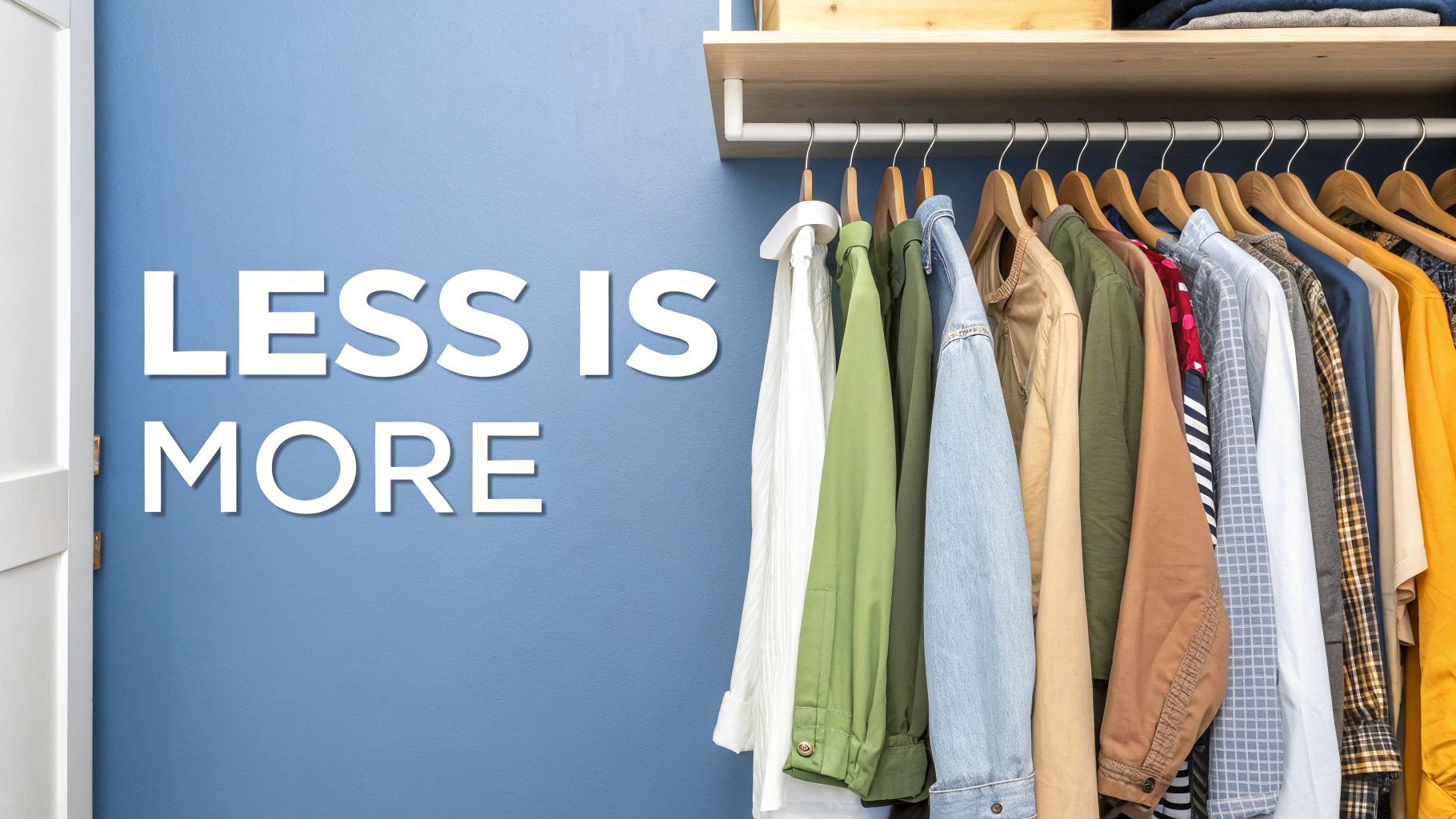
The wellness industry can feel overwhelming, constantly telling us we need more products and complicated routines. But what if true well-being was about less, not more? Minimalist self-care is about getting better results with simplicity. It’s about finding what truly works for you and letting go of the rest.
This approach saves you time and money, while also boosting your overall well-being. It focuses on practices backed by evidence, not just the latest fads, leading to a more sustainable self-care journey.
Essentialism in Wellness: Focusing on What Matters
Minimalist self-care isn’t about neglecting yourself. It’s about focusing on the essentials. Think of it like cooking a delicious meal with a few high-quality ingredients instead of a complex recipe with a mile-long grocery list.
Here’s what to prioritize:
- Nutrition: Focus on whole, unprocessed foods and consistent meal times.
- Exercise: Choose activities you enjoy and can easily fit into your life.
- Mental Health: Explore practices like mindfulness, journaling, or simply spending time outdoors.
These core elements are the building blocks of sustainable self-care. A 20-minute daily walk, for example, can be far more beneficial than infrequent, stressful gym visits. This targeted approach ensures you’re investing in activities that truly make a difference. You might be interested in: How to Start Minimalism.
Streamlined Routines: Less Friction, More Consistency
Minimalist self-care is about building routines that fit seamlessly into your life. This makes it easier to stick to them and avoid feeling overwhelmed. It’s like packing light for a trip—you want to bring only the essentials.
Here are a few examples:
- Morning: A short meditation session, a nourishing breakfast, and a quick review of your daily goals.
- Evening: Journaling to reflect on your day, gentle stretching, and getting organized for tomorrow.
These routines are simple but effective, setting a positive tone for your day. Consistency creates a sense of calm and stability, further enhancing your well-being. Minimalist self-care is about how you integrate it into your life, not just what you do.
Cutting Through the Wellness Noise: Separating Fact From Fiction
The wellness industry is full of trendy products and practices, but not all of them are effective. Minimalist self-care emphasizes the importance of separating fact from fiction. Look for evidence-based approaches and choose quality over quantity.
This discerning approach is reflected in current consumer trends. The health and wellness market is projected to reach $6 trillion by 2025, with consumers increasingly seeking minimalist products and packaging. Discover more insights about minimalist consumer trends.
Sustainable Self-Care: Making it Last
Minimalist self-care is about creating long-term habits. It’s about choosing routines you can maintain without burning out. This sustainable approach makes self-care a natural part of your lifestyle, not a temporary fix.
It also means listening to your body and adapting your routines as needed. This personalized approach creates a truly effective and sustainable self-care plan, fitting perfectly into a minimalist life.
Financial Freedom Through Minimalist Thinking
Minimalist living isn’t just about decluttered closets. It’s about changing how we think about money. By shifting our focus from material things to experiences and intentional living, we can achieve true financial freedom. This means breaking free from consumerism and embracing a more mindful approach to spending and saving. You’ll find that living with less creates space for what truly matters, from paying off debt to pursuing fulfilling work.
From Fleeting Wants to Authentic Needs: A Mindful Approach to Spending
A core principle of minimalism is knowing the difference between wants and needs. We’re constantly bombarded with advertisements telling us what we should want, creating a cycle of endless consumption. Minimalism encourages us to question these messages. Ask yourself: Do I really need this, or am I just caught up in the moment? This critical thinking can help us avoid impulse buys and prioritize spending on things that genuinely enrich our lives. This conscious approach is key to a healthy relationship with money.
Focused Budgets: Prioritizing Experiences Over Possessions
A focused budget is essential for financial freedom in a minimalist lifestyle. This means prioritizing experiences and personal growth over accumulating more stuff. Instead of the latest gadget, consider a weekend trip with loved ones or learning a new skill. These experiences create lasting memories and enrich our lives in ways that material possessions often can’t. Plus, minimalist living naturally reduces spending on unnecessary items, freeing up resources for what truly matters.
Let’s take a look at how these different mindsets impact our finances long-term:
| Financial Aspect | Minimalist Approach | Consumer Approach | Long-term Impact |
|---|---|---|---|
| Spending Habits | Needs-based, intentional purchases | Driven by trends and advertising, frequent purchases | Minimalists accumulate less debt and have more savings. Consumers may struggle with debt and have less financial security. |
| Budgeting | Prioritizes needs, experiences, and savings | Often reactive, influenced by external pressures | Minimalists have more control over their finances and can allocate funds towards long-term goals. Consumers may have less predictable spending and struggle to save. |
| Investments | Focused on long-term growth, aligned with values | May chase short-term gains, influenced by market fluctuations | Minimalists are more likely to build wealth steadily over time. Consumers may experience more volatile investment outcomes. |
| Relationship with Possessions | Values experiences and utility over material accumulation | Driven by acquiring the newest and best things | Minimalists tend to have less financial stress related to acquiring and maintaining possessions. Consumers may experience more financial strain due to lifestyle inflation. |
The table above clearly highlights how a minimalist approach to finances leads to greater long-term stability and financial freedom.
Building Wealth Through Simplified Investments
Minimalism simplifies investing. We can make smarter investment choices by focusing on long-term financial goals rather than short-term gratification. This could involve consolidating accounts, automating savings, or working with a financial advisor. This simplified approach removes complexity and aligns financial decisions with our values. For example, you might invest in companies prioritizing ethical and sustainable practices, reinforcing your minimalist values.
Breaking Free From Subscription Overload and Advertising Influence
Minimalists often re-evaluate subscriptions and advertising’s influence.
How many streaming services do you actually use?
Do those monthly subscription boxes truly add value?
We can often cut back by critically evaluating recurring expenses without sacrificing quality of life. This conscious approach is crucial for financial freedom. It can create a ripple effect, freeing up resources for debt reduction, investments, or pursuing meaningful work. Minimalist thinking encourages us to question our spending habits and make conscious choices. This empowers us to take control of our finances and create a life of greater freedom and purpose. You might be interested in: 12 Universal Benefits of Minimalism. One minimalist blogger shares insightful lessons learned after six years of embracing the minimalist lifestyle, highlighting the unexpected benefits of living with less. This emphasizes the profound impact decluttering can have on our overall well-being, extending beyond the physical realm into our financial and mental health.
Living Simply, Treading Lightly: The Sustainable Path
Minimalism and sustainability go hand in hand. Embracing a minimalist lifestyle naturally leads to more eco-conscious decisions. This connection comes from consuming less, reducing waste, and being more thoughtful about what you buy. This section explores some practical ways to combine minimalist aesthetics with eco-friendly living, benefiting both your bank account and the planet.
Consumption and Waste: The Minimalist Advantage
Minimalist living inherently reduces how much you consume. This mindful approach challenges the throwaway culture that contributes to so many environmental problems. It’s about choosing quality over quantity and valuing experiences over material possessions. This change in mindset has a ripple effect, lessening your environmental impact one conscious choice at a time.
Conscious Purchasing: Quality Over Quantity
Minimalists appreciate durable, well-made items. This focus on quality often translates to more sustainable choices. For example, investing in a well-made, ethically sourced shirt that lasts for years is a more sustainable choice than buying several cheaply made, fast-fashion items that quickly wear out. This “less is more” philosophy helps you prioritize purchases and make choices that reflect your minimalist and sustainable values.
Avoiding Greenwashing: Making Informed Choices
The increasing popularity of “eco-friendly” products has unfortunately opened the door to greenwashing, where companies mislead consumers about their sustainability practices. Minimalists, with their emphasis on essentialism, are well-prepared to see through these marketing tactics. This involves researching brands, checking for certifications, and prioritizing truly sustainable materials and production processes. This critical approach ensures you’re supporting businesses genuinely dedicated to environmental responsibility.
Circular Systems at Home: Reducing Your Footprint
Building circular systems at home is a practical way to live a sustainable, minimalist life. This could involve composting food scraps, repurposing old clothing into cleaning rags, or repairing broken items instead of replacing them. These small but significant actions minimize waste and encourage a more sustainable lifestyle. This not only benefits the environment but also connects you more deeply to your belongings and reduces your expenses.
Community Engagement: Collective Action for Change
Minimalism isn’t just a personal journey; it can be a catalyst for collective action. Connecting with local groups that focus on environmental issues allows you to meet like-minded people and work towards positive change. This might include participating in community cleanups, advocating for sustainable policies, or supporting local businesses committed to environmental stewardship. This sense of community strengthens minimalist values and amplifies your positive impact on the world. A minimalist blogger reflecting on six years of simpler living highlights the unexpected benefits of owning less, showcasing the transformative power of decluttering for overall well-being.
Digital Minimalism: Finding Focus in a Distracted World
Our digital lives can easily become cluttered, just like our physical spaces. The constant barrage of notifications, endless emails, and the addictive pull of social media can scatter our attention and make it difficult to concentrate on what truly matters. This section explores how digital minimalism, a core component of minimalist living, can help us regain our focus and live more intentionally.
Understanding Digital Clutter and Its Impact
Digital clutter isn’t simply about overflowing inboxes or having too many apps on our phones. It’s about the constant demands on our attention, the feeling of being overwhelmed by technology, and the subtle ways it can pull us away from our goals and values. This constant state of partial attention can result in increased stress, reduced productivity, and a nagging sense of always being behind. Just like physical clutter can cloud our minds, digital clutter fragments our focus and hinders clear thinking.
Reclaiming Your Focus: Strategies for Digital Decluttering
Digital decluttering involves making conscious decisions about which technologies genuinely add value to our lives and minimizing those that create noise and distraction. This isn’t about abandoning technology altogether; it’s about using it with intention. You might find this article helpful: How to enjoy social media while being a minimalist. We can create a calmer, more focused digital environment by carefully curating our digital tools.
Here are some practical steps to get started:
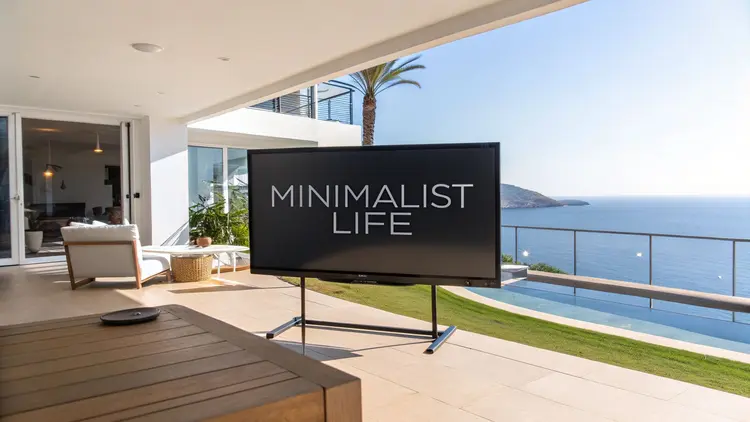
- Unsubscribe from unnecessary emails: Clear out the noise and reclaim your inbox.
- Turn off non-essential notifications: Take back control of your attention.
- Limit social media consumption: Set healthy boundaries to protect your mental well-being.
- Curate your app usage: Only keep the apps that truly serve a purpose in your life.
- Schedule dedicated “digital detox” periods: Give your mind a break from the constant stimulation of technology.
The Minimalist Framework for Evaluating Technology
Applying minimalist principles to technology involves asking ourselves some key questions: Does this technology add value to my life? Does it align with my goals and values? Or does it primarily serve as a distraction and create unnecessary complexity? This framework empowers us to make conscious choices about the technologies we use and how we use them. For example, instead of passively scrolling through social media, we might choose to connect with a few close friends online or use technology to learn a new skill.
Inbox Zero and Beyond: Organizing Your Digital Environment
Just as we organize our physical spaces, organizing our digital environment can bring greater efficiency and peace of mind. This might involve using techniques like inbox zero, organizing files on our computers, or utilizing productivity apps like Trello or Asana to manage tasks and projects. These strategies help create a sense of order and control in our digital lives, freeing up mental space for more meaningful pursuits.
Integrating Technology Mindfully: Finding Balance in a Digital World
Digital minimalism is not about rejecting technology; it’s about finding a healthy balance. It’s about integrating technology mindfully into our lives so that it serves us, not the other way around. This means being aware of how we spend our time online, setting clear boundaries, and prioritizing real-world connections and experiences. By cultivating a mindful approach to technology, we can enjoy its benefits without letting it dominate our lives. One minimalist blogger wisely observed that “the ‘good life’ isn’t one we can buy…happiness is found in less.” This sentiment reflects the essence of digital minimalism – finding joy and focus by reducing digital clutter and embracing intentionality online.
Ready to simplify your digital life and boost your productivity? Lorelei Web offers practical insights and strategies for entrepreneurs seeking to master their digital spaces and achieve greater focus. Explore Lorelei Web today and discover how minimalist principles can transform your business and your life.

Lorelei has been an online entrepreneur, marketer and writer since 2006. Her biggest passion is WordPress, which is why she switched to being a full-time blogger 20 years ago and hasn’t looked back since. With so many years of experience behind her, she is an expert in copywriting, SEO, marketing and business strategies.


